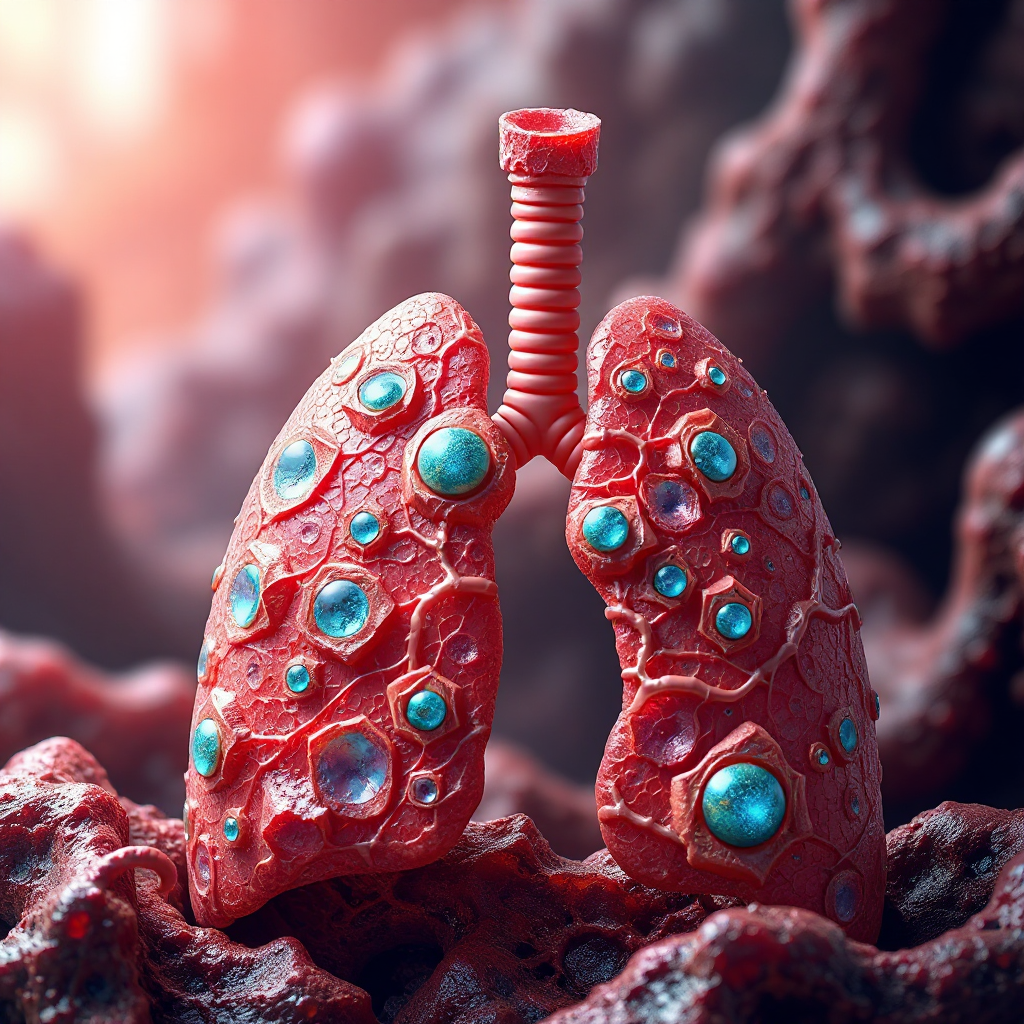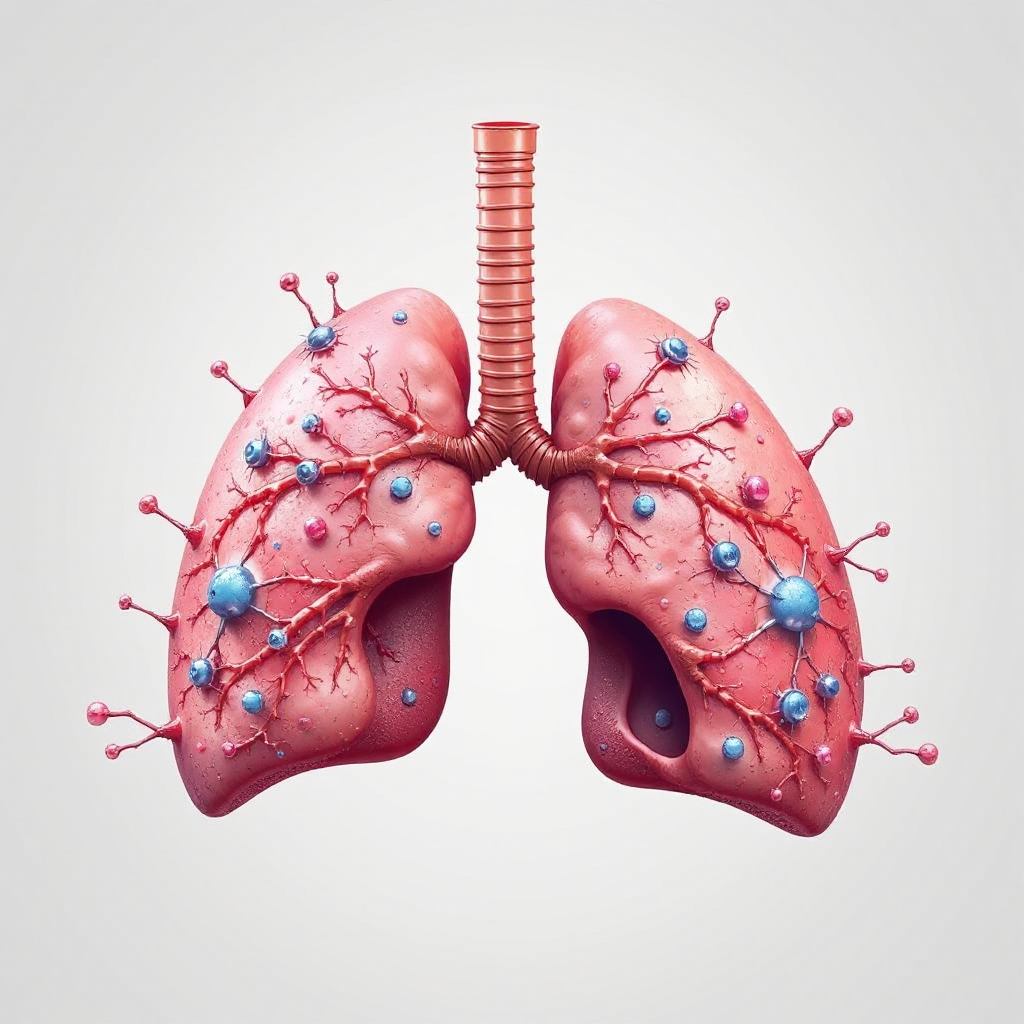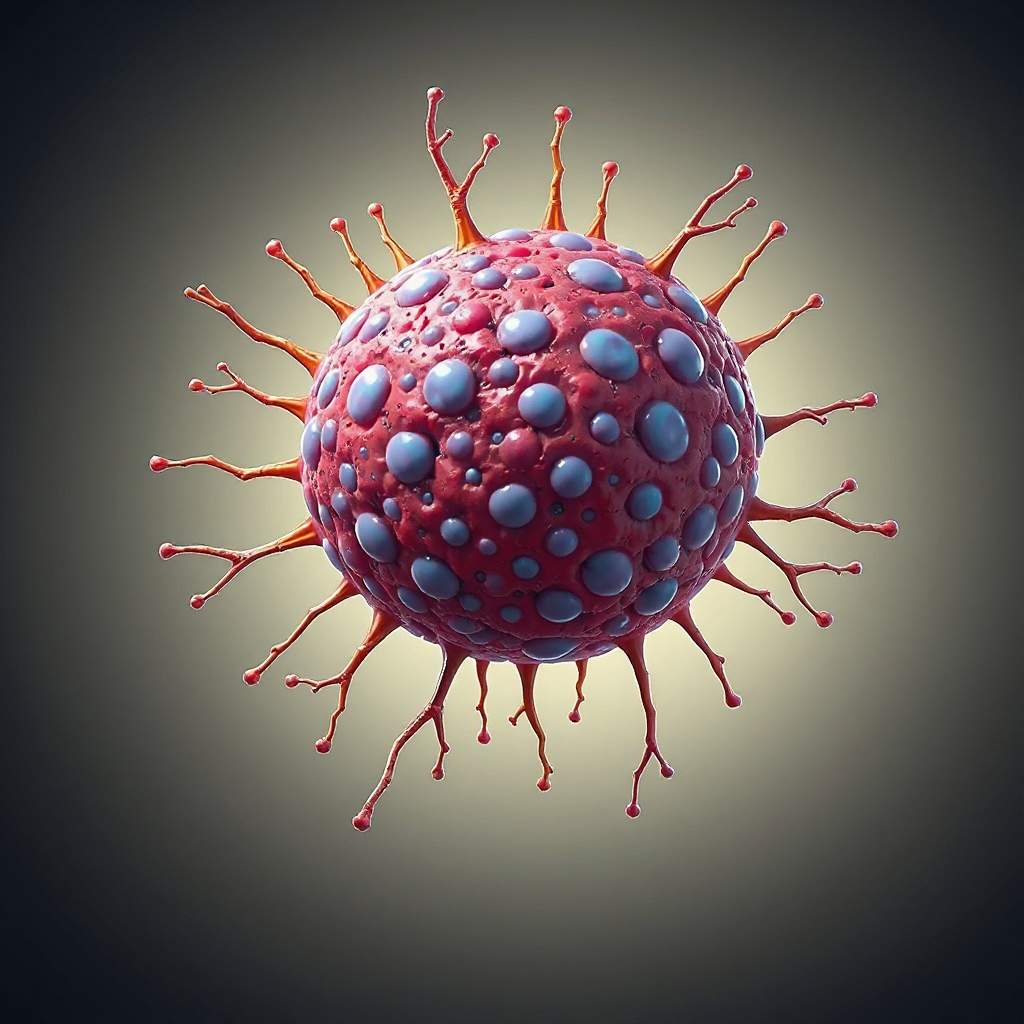What Is Squamous Cell Carcinoma of the Lung?

Squamous cell carcinoma of the lung is a common type of non-small cell lung cancer. It develops in the thin, flat cells lining the airways of your lungs. This condition accounts for about 25% to 35% of all lung cancer cases. Men are significantly more affected than women, with studies showing a female-to-male ratio of 0.5 over the past decade. Understanding this disease is crucial. Recognizing its causes, symptoms, and treatment options can help you take proactive steps toward better lung health.
Key Takeaways
Squamous cell lung cancer is a common type of lung cancer. It makes up about 25% to 35% of all lung cancer cases. Knowing its causes and signs helps find it early.
Smoking is the main cause of this cancer. Stopping smoking and staying away from secondhand smoke lowers your risk a lot.
Early signs include a cough that won’t go away, chest pain, and trouble breathing. See a doctor if you notice these symptoms for quick diagnosis.
Regular tests, like low-dose CT scans, can find lung cancer early. Early detection helps improve treatment success. Talk to your doctor about tests if you are at high risk.
New treatments, like immunotherapy and targeted therapy, give patients hope. Learn about your treatment choices to help with your recovery.
Causes and Risk Factors
What Causes Squamous Cell Carcinoma of the Lung?
Squamous cell carcinoma of the lung develops when the cells lining your airways undergo abnormal changes. These changes often result from prolonged exposure to harmful substances, such as tobacco smoke or environmental toxins. Over time, these exposures can damage the DNA in your lung cells, leading to uncontrolled cell growth and tumor formation.
Major Risk Factors
Smoking and Tobacco Use
Smoking remains the leading cause of squamous cell carcinoma of the lung. Tobacco contains carcinogens that directly damage lung tissue. If you smoke, your risk of developing this cancer increases significantly. Even exposure to secondhand smoke can elevate your risk.
Environmental Exposures (e.g., asbestos, air pollution)
Certain environmental factors also contribute to lung cancer. For example, asbestos fibers, when inhaled, can lodge in your lung tissue. This causes irritation and inflammation, which may lead to DNA changes in your lung cells. The International Agency for Research on Cancer has linked asbestos exposure to squamous cell carcinoma. Additionally, air pollution and exposure to radon gas are significant contributors. Poor air quality can worsen lung health, while radon is the second leading cause of lung cancer, especially in nonsmokers.
Genetic and Demographic Factors
Your genetic makeup and demographic background can also influence your risk. A family history of lung cancer increases your likelihood of developing the disease. Men are more commonly affected than women, and older adults face a higher risk due to cumulative exposure to carcinogens over time.
Risk Factor | Description |
|---|---|
Smoking | Closely correlated with squamous cell carcinoma; smokers are significantly more likely to develop lung cancer. |
Radon exposure | Second leading cause of lung cancer; particularly affects nonsmokers. |
Secondhand smoke exposure | Increases risk of lung cancer. |
Exposure to cancer-causing substances | Includes asbestos, arsenic, and other chemicals, often encountered in occupational settings. |
Air pollution | Poor air quality can exacerbate lung cancer risk. |
Medical history | Personal or family history of lung cancer increases risk. |
Symptoms of Squamous Cell Carcinoma of the Lung

Early Symptoms
Persistent Cough and Chest Pain
One of the earliest signs you might notice is a persistent cough that doesn’t go away. This cough may worsen over time or feel different from a typical cold or flu. You could also experience chest pain, especially when taking deep breaths or coughing. This pain often feels sharp and localized, making it hard to ignore.
Other early symptoms include recurring lung infections, such as pneumonia or bronchitis. These infections happen because the tumor can block airways, making it easier for bacteria to grow. You might also notice hoarseness in your voice or swelling in your neck and face. These symptoms occur when the tumor presses on nearby structures.
Shortness of Breath
Shortness of breath is another common early symptom. You may feel winded even during simple activities like walking or climbing stairs. This happens because the tumor can obstruct airflow in your lungs. Wheezing or a whistling sound when you breathe might also develop.
Tip: If you experience any of these symptoms, consult a healthcare provider. Early detection can significantly improve outcomes.
Advanced Symptoms
Coughing Up Blood
As squamous cell carcinoma of the lung progresses, you might start coughing up blood or rust-colored mucus. This symptom often indicates that the tumor has grown large enough to damage blood vessels in your lungs. While this can be alarming, it’s a critical sign that requires immediate medical attention.
Unexplained Weight Loss and Fatigue
Advanced stages of this cancer can cause unexplained weight loss and extreme fatigue. You may lose your appetite or feel too tired to complete daily tasks. These symptoms occur because cancer cells consume your body’s energy and nutrients.
Other advanced symptoms include bone pain, dizziness, and swollen lymph nodes. These signs suggest that the cancer has spread to other parts of your body.
Note: Advanced symptoms can take a toll on your physical and emotional well-being. Seeking support from healthcare professionals and loved ones can make a difference.
Diagnosis of Squamous Cell Carcinoma of the Lung
Medical Evaluation
History and Physical Examination
Diagnosing squamous cell carcinoma of the lung begins with a thorough medical evaluation. Your doctor will ask about your symptoms, smoking history, and exposure to environmental toxins like asbestos or radon. They will also perform a physical examination to check for signs such as swollen lymph nodes, abnormal breathing sounds, or chest tenderness. This step helps identify potential red flags that require further investigation.
Diagnostic Procedures
Imaging Tests (e.g., X-rays, CT scans)
Imaging technology plays a vital role in diagnosing this type of lung cancer. A chest X-ray is often the first test performed to detect abnormalities in your lungs. If the X-ray shows suspicious areas, a CT scan provides a more detailed view of the tumor's size and location. PET scans may also be used to determine if the cancer has spread to other parts of your body. These imaging tools help visualize the lungs and guide the next steps in diagnosis.
Biopsy and Pathology Analysis
A biopsy is essential for confirming the diagnosis of squamous cell carcinoma of the lung. During this procedure, your doctor collects a small tissue sample from the tumor. This can be done using a needle biopsy, bronchoscopy, or mediastinoscopy. Pathologists then analyze the sample under a microscope to identify cancer cells and determine the cancer subtype. This step is crucial for planning effective treatment.
Bronchoscopy and Other Techniques
Bronchoscopy is a common technique used to examine the airways and collect tissue samples. During this procedure, a thin, flexible tube with a camera is inserted into your lungs. Other methods, such as thoracentesis, may be used to collect fluid around the lungs for analysis. Molecular tests can also identify specific gene mutations, helping doctors tailor treatments to your needs.
Tip: Early and accurate diagnosis improves your chances of successful treatment. If you experience symptoms, consult a healthcare provider promptly.
Treatment Options for Squamous Cell Carcinoma of the Lung

Surgical Interventions
Lobectomy and Pneumonectomy
Surgery offers the best chance for curing squamous cell carcinoma of the lung, especially in its early stages. Among surgical options, lobectomy is the most effective. This procedure removes an entire lobe of the lung where the tumor is located. It ensures that cancerous cells are eliminated while preserving as much healthy lung tissue as possible. In more severe cases, pneumonectomy may be necessary. This involves removing an entire lung to prevent the spread of cancer.
Your doctor will recommend surgery based on the tumor's size, location, and whether it has spread. While surgery can be life-saving, it requires a thorough evaluation of your overall health to ensure you can tolerate the procedure.
Note: Recovery from lung surgery can take time. You may need pulmonary rehabilitation to regain strength and improve breathing.
Radiation Therapy
Radiation therapy uses high-energy rays to target and destroy cancer cells. It is often used when surgery is not an option or to shrink tumors before surgery. This treatment can also relieve symptoms like pain or difficulty breathing in advanced stages.
However, radiation therapy can cause side effects. These may include:
Fatigue
Nausea and vomiting
Loss of appetite and weight loss
Skin changes in the treated area
Hair loss where radiation enters the body
You might also experience a sore throat, swallowing problems, or shortness of breath. These effects vary depending on the treatment area and your overall health. Discussing potential side effects with your doctor can help you prepare and manage them effectively.
Chemotherapy
Chemotherapy involves using drugs to kill cancer cells or stop them from growing. It is often combined with other treatments, such as surgery or radiation therapy, to improve outcomes. Chemotherapy can also treat advanced stages of squamous cell carcinoma of the lung by slowing the disease's progression.
Your doctor will tailor the chemotherapy plan to your specific needs. This ensures the treatment targets cancer cells while minimizing harm to healthy tissues. While chemotherapy can cause side effects like nausea, fatigue, and hair loss, advancements in medicine have made these effects more manageable.
Tip: Staying hydrated and eating a balanced diet can help you cope with chemotherapy's side effects.
Targeted Therapy and Immunotherapy
Targeted therapy focuses on attacking specific molecules or genetic mutations that drive cancer growth. For squamous cell carcinoma of the lung, doctors may recommend drugs that block proteins like EGFR (epidermal growth factor receptor). These proteins help cancer cells grow and spread. By targeting them, these therapies slow tumor progression and improve your quality of life.
Immunotherapy, on the other hand, boosts your immune system to fight cancer. Drugs like immune checkpoint inhibitors block proteins that prevent your immune cells from attacking tumors. This approach helps your body recognize and destroy cancer cells more effectively. Immunotherapy works well for advanced stages of squamous cell carcinoma of the lung, especially when other treatments are less effective.
Both therapies offer hope for patients who cannot undergo surgery or chemotherapy. However, they may cause side effects such as fatigue, skin rashes, or flu-like symptoms. Your doctor will monitor your progress and adjust the treatment plan to minimize discomfort.
Tip: Ask your healthcare provider if targeted therapy or immunotherapy is suitable for your condition. Personalized treatments can make a significant difference in your recovery journey.
Palliative Care for Symptom Relief
Palliative care focuses on improving your quality of life when dealing with squamous cell carcinoma of the lung. It does not aim to cure the disease but helps manage symptoms and provides emotional support.
Key goals of palliative care include:
Relieving cancer symptoms like pain, shortness of breath, or fatigue
Improving your overall comfort and well-being
Offering emotional support to you and your loved ones
Palliative care may involve medications, oxygen therapy, or counseling. For example, pain management techniques like opioids or nerve blocks can reduce discomfort. Breathing exercises and physical therapy can also help you feel more at ease. Emotional support from counselors or support groups can address anxiety and depression.
Note: Palliative care works alongside other treatments. You can benefit from it at any stage of your illness, not just in advanced stages.
Prognosis and Prevention
Prognosis and Survival Rates
Factors Influencing Prognosis
Several factors influence your prognosis if you have squamous cell carcinoma of the lung. The stage of cancer at diagnosis plays a critical role. Early-stage cancer has a better outlook compared to advanced stages. For example:
The 5-year relative survival rate for localized squamous cell carcinoma of the lung is 37%.
If the cancer spreads to distant organs, the survival rate drops to 8%.
Other factors include your age, overall health, and how well you respond to treatment. Managing side effects from treatments like chemotherapy or radiation therapy can also impact your quality of life and recovery.
Factor | Impact on Prognosis |
|---|---|
Stage of cancer | Early detection improves survival rates. |
Age and general health | Younger, healthier individuals fare better. |
Treatment response | Effective treatments improve outcomes. |
Importance of Early Diagnosis
Early diagnosis significantly improves your chances of survival. When detected early, the 5-year survival rate for squamous cell carcinoma of the lung is 37%. However, late-stage detection reduces this rate to just 8%. Regular screenings can help identify lung cancer early, making treatment more effective. Unfortunately, lung cancer screenings remain underutilized in many regions. Taking proactive steps, like consulting your doctor about screening options, can make a life-saving difference.
Tip: If you experience persistent symptoms like coughing or chest pain, seek medical advice promptly.
Prevention Strategies
Quitting Smoking
Smoking is the leading cause of squamous cell carcinoma of the lung. Quitting smoking reduces your risk significantly. About 80% of lung cancer cases are linked to smoking. Medications and counseling are the most effective methods to help you quit. Avoiding secondhand smoke is equally important, as it can also increase your risk.
Reducing Exposure to Carcinogens
Limiting your exposure to harmful substances like radon, asbestos, and air pollution can lower your risk of lung cancer. Radon, a naturally occurring gas, is the second leading cause of lung cancer. Testing your home for radon and taking steps to reduce its levels can protect your lungs. If you work in industries with high exposure to carcinogens, such as construction or chemical manufacturing, wearing protective equipment is essential.
Note: Long-term exposure to carcinogens poses a higher risk for smokers, making prevention even more critical.
Role of Regular Screenings
Regular screenings play a vital role in detecting squamous cell carcinoma of the lung early. Low-dose CT scans can identify lung cancer before symptoms appear, increasing the likelihood of successful treatment. Early detection not only improves survival rates but also reduces the need for aggressive treatments. If you are at high risk, such as being a smoker or having a family history of lung cancer, talk to your doctor about screening options.
Reminder: Screening is most effective when done regularly. Don’t wait for symptoms to appear before taking action.
Understanding squamous cell carcinoma of the lung is essential for recognizing its risks and symptoms early. This cancer originates in the squamous cells lining the bronchi and can spread to lymph nodes and other organs. Smoking remains the leading risk factor, but exposure to harmful substances and genetic predisposition also play significant roles. Early detection through imaging tests and biopsies improves treatment outcomes, especially when the disease is diagnosed before it advances to later stages.
Recent advancements in treatment offer hope for patients. Immunotherapies like Pembrolizumab and Nivolumab have shown promising results, improving survival rates when combined with chemotherapy or surgery. New surgical techniques are also enhancing safety and effectiveness, giving patients more options for recovery. These developments highlight the progress being made in fighting this challenging disease.
By staying informed and proactive, you can take control of your lung health. Early diagnosis and access to innovative treatments can make a life-changing difference.
FAQ
What is the difference between squamous cell carcinoma and other types of lung cancer?
Squamous cell carcinoma starts in the flat cells lining your airways. It differs from adenocarcinoma, which begins in mucus-producing cells, and small cell lung cancer, which grows faster and spreads more aggressively. Each type requires specific treatments.
Can squamous cell carcinoma of the lung spread to other parts of the body?
Yes, it can spread to lymph nodes, bones, liver, or brain. This process, called metastasis, often occurs in advanced stages. Early detection reduces the risk of cancer spreading and improves treatment outcomes.
Is squamous cell carcinoma of the lung curable?
Cure depends on the stage at diagnosis. Early-stage cancer has higher chances of successful treatment through surgery, radiation, or chemotherapy. Advanced stages focus on controlling the disease and improving quality of life.
How can I reduce my risk of developing squamous cell carcinoma of the lung?
Quit smoking and avoid secondhand smoke. Test your home for radon and limit exposure to carcinogens like asbestos. Regular screenings also help detect lung cancer early, especially if you have risk factors.
Are there side effects from treatments for squamous cell carcinoma?
Yes, treatments like chemotherapy, radiation, or surgery may cause fatigue, nausea, or breathing difficulties. Side effects vary by individual and treatment type. Your doctor can help manage these symptoms effectively.
Tip: Always discuss potential side effects with your healthcare provider to prepare for treatment.
See Also
Essential Insights Into Basaloid Squamous Cell Lung Cancer
Exploring Large-cell Lung Carcinoma: Types and Classifications
Identifying Causes and Risks of Lung Adenocarcinoma
Key Molecular Characteristics of Giant Cell Lung Carcinoma
Defining Invasive Cribriform Carcinoma Found in Breast Tissue
